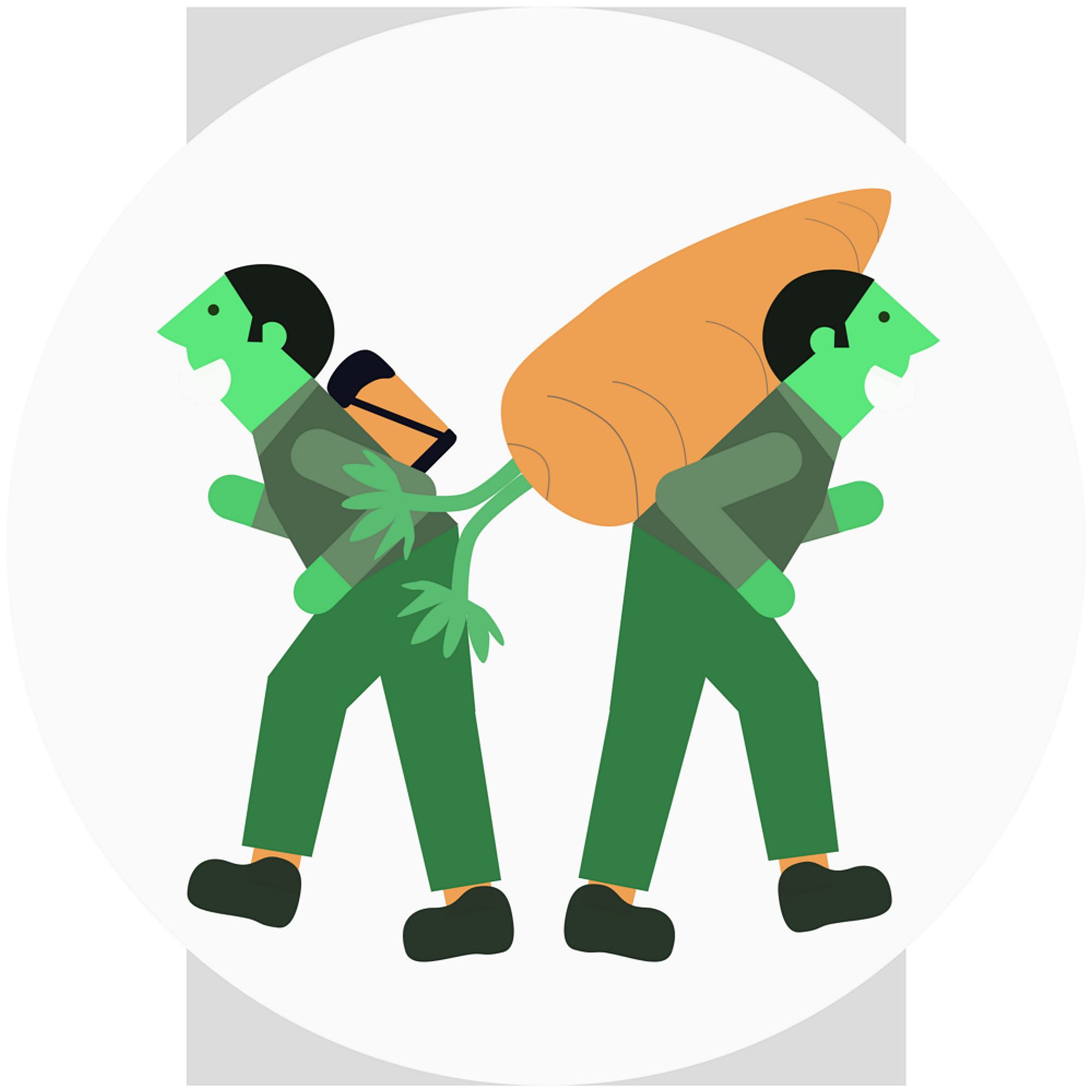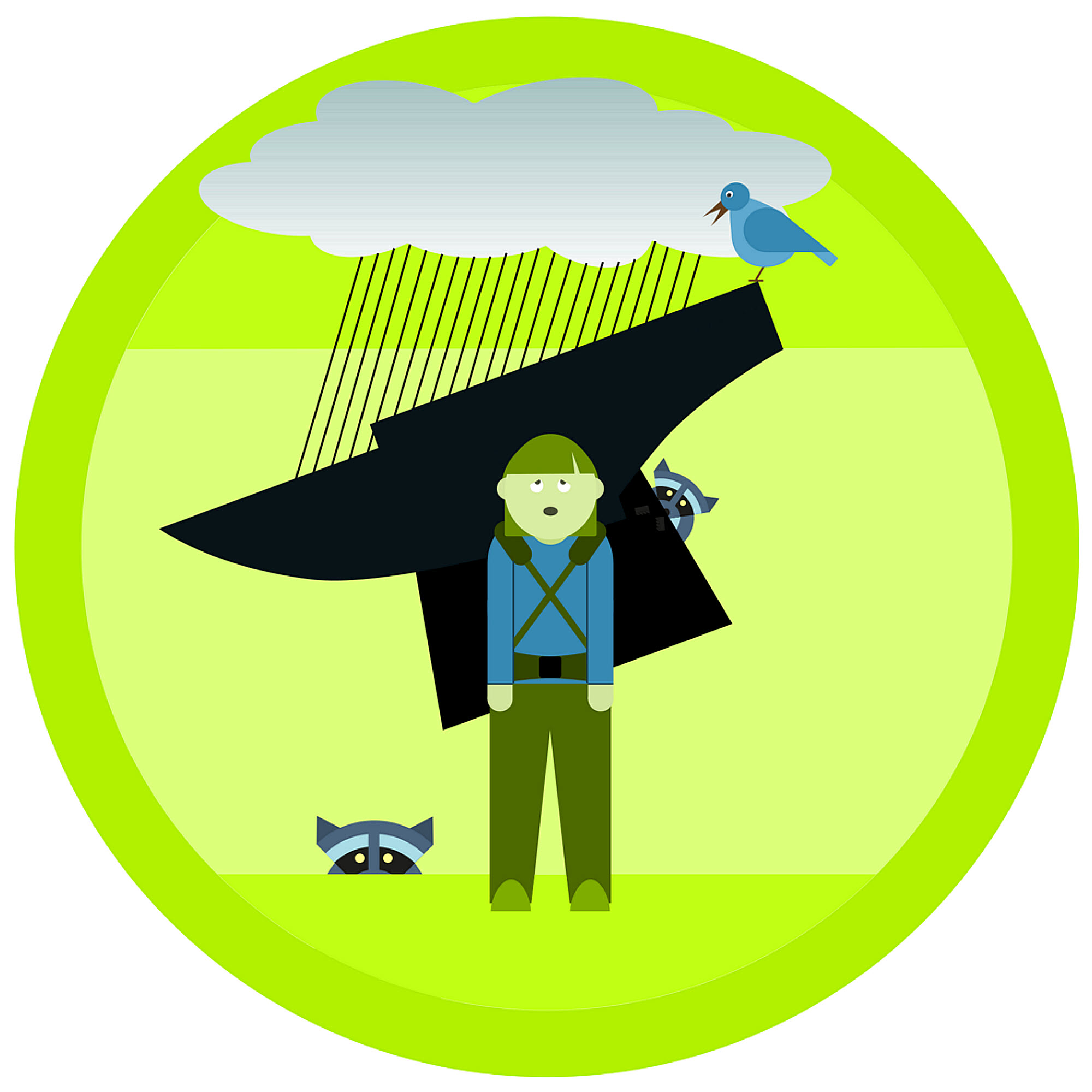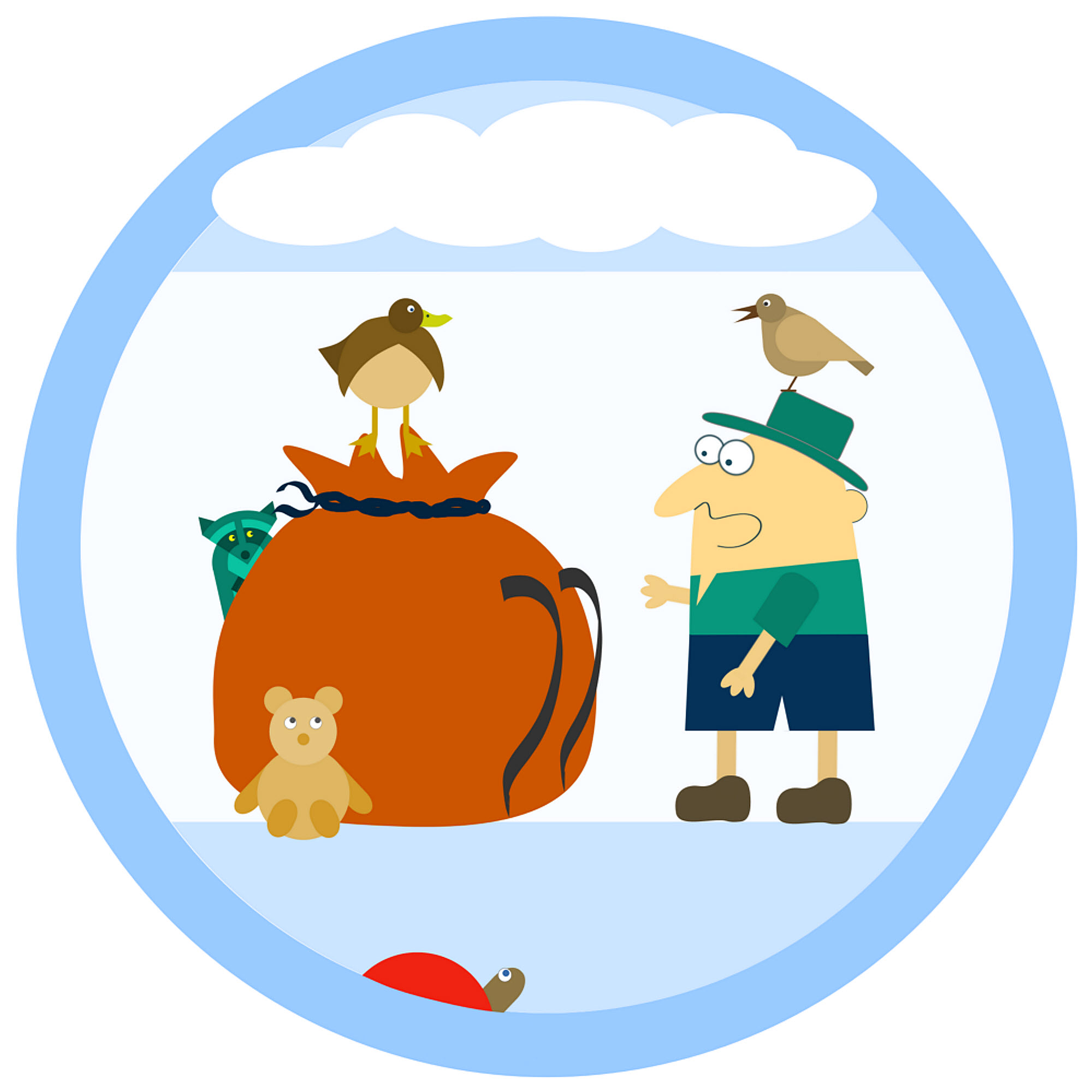Story Break
The Lazy Backpacker And The Mice.
A story from once upon a time.
Once upon a time there was a very lazy backpacker. This may seem hard to believe but some things are true, and this is a very true story, so it was true. There was a very lazy backpacker, once upon a time.
This lazy backpacker was also stupid.
How could you tell?
Well, because of things.
He was obviously stupid because he carried a huge backpack full of food. This does not sound so bad but listen and you will hear why. The lazy backpacker did not want to work very hard at backpacking, so he should have carried a small, light pack. But he was not so bright, so he carried a huge big backpack, and it was full of food, which made it ever so heavy.
He was clever though, in a part of his mind that was not good for anything else. The story goes like this:
The clever part of him thought “Hah! I know! I will bring all kinds of good things to eat, and then I can lounge away the days snacking on treats while I think about the end of the trail, and while I am doing this I won’t even have to be carrying the pack, so the weight does not matter. And then, when I am almost out of food I will find a ride to the end of the trail and pretend I passed all of my friends at night, when they were wasting time by sleeping, and I will shame them too. This sounds like a fine plan to me!”
And so it was. A fine plan. A stupid plan. A fine and stupid plan.
The stupid part of the backpacker thought he could get away with this, and so did the lazy part of him, because the lazy part of him was also stupid, but once his pack was all full of food and good things to eat, he could barely lift it, and his friends only laughed at him. His friends began hiking, and so did the lazy backpacker, but slowly, very slowly, and he did not go far. He could not keep up with his friends, and hardly tried to, so before long he fell far behind.
This was fine with the lazy backpacker. Because it was all part of his plan.
Almost as soon as his friends were out of sight he found a soft place to rest and put down his pack and had a nap. This was exactly what he wanted. A nice nap in the sun. So he took that nap, right there and then.
When the sun had almost gone down into the earth for the night the lazy backpacker woke up just in time to have supper and set up his tent, and then he went to bed to sleep some more and dream of food and of how clever he was.
You may be thinking “Aha! Now something interesting will happen while this lazy fool is sleeping and we will find out what this story is about.”
No, you are wrong.
Nothing at all happened.
Aside from lots of snoring, which is boring.
All night, except for the snoring, everything was quiet, and when the proper time arrived the sun once again came forth from the earth and made the world bright and warm. This woke up the lazy backpacker, who ate a large breakfast, pulled his pack onto his back, and staggered off, tromping down the trail, but slowly, tipping from side to side. He was very happy, though his heavy pack hurt him, because he was also very stupid, but this is often how things are.
The lazy backpacker walked all day, slowly, and slept all night, vigorously, and continued like this day after day, walking and walking except for his frequent naps, and his frequent stops for snacks, and for his rich meals of fine foods, all of which he carried in his pack.
This sounds impressive but it was not, unless you like the sounds of belching and farting, and snoring in the night, which some backpackers do.
The stupid backpacker did not really go very far at all though, because he was always stopping for a snack or a meal or a nap, or all of them one after another, so he fell farther and farther behind his friends. And he did not care at all, because of his plan, because he was lazy, and because he was stupid.
His friends did not care at all either, because he mooched off them when he could, and smelled bad, and was a dick, so they were glad to be rid of him. Whenever any one of them would think of the lazy backpacker at all, that person would tell a story, about him, and all the others would laugh and hold their sides and feel lucky to be rid of him. And glad too. Very glad.
But their packs were not so light either. They carried all kinds of things that they did not really need, and suffered for it. So they were really not much smarter than the lazy backpacker, and he had a secret plan to make them all look bad, so maybe he was really the smart one, in his own way.
Who can say?
So one evening the lazy backpacker came to a very nice place and he thought he would camp there and have good things to eat and then go to bed and snore happily. Accordingly, he set down his pack the way he always did, and cleared a spot for his tent the way he always did, and then he sat down for supper.
And then he ate and ate.
He ate more that night than ever before, and became very sleepy, even though he had already had several naps that day. But because his pack was so heavy it was hard work to carry it and he was very tired. And all the rich food he ate made him extra special sleepy, so he went into his tent and fell fast asleep at once, and then he snored.
He snored and snored and snored in the dark. Far into the night. And then he snored even more.
The lazy backpacker did not know this, but the place he had set up his camp was near the home of a mouse family, almost on top of them. There were two sisters and two brothers in this family — Norton, Sudyle, Estelle, and Westly, and they were fine, enterprising, happy, and very bright mice, as mice go, and during the night they discovered the lazy backpacker.
This was not hard to do because the lazy backpacker snored like a thunderstorm until the very earth he lay upon rumbled in annoyance, and this woke the mice, and then they could not get back to sleep, so they went over to the tent of the stupid backpacker to complain, but they could not rouse him.
He was too big and too thick and too heavy and too fast asleep for that.
Compared to them he was like a mountain, and the tiny mice were afraid that if they did wake him he might roll over on them, or go rampaging about, swinging his great meaty arms and stamping his giant heavy feet and hurt one of them, or hurt all of them. So they stood there uncertainly and watched while the stupid lazy backpacker snored and snored and made the ground beneath their feet shake and rumble.
The mice did not know much about humans but it was clear they had to be cautious, especially with this one.
So they decided to think.
And instead of going back to bed angry and lying there and swearing the rest of the night, the mice decided to have some fun, as mice sometimes do, and get revenge, as mice also do, at times.
First, from nearby trees they gathered a good supply of sticky sap. It was a dry year that year and all the sap weeping from trees was very sticky, and they gathered lots of it. Lots and lots of it.
Then they plucked many fine strands of dry grass and made great bundles of it and took the great bundles to the lazy backpacker’s tent along with the sap.
Once there they covered the lazy backpacker’s entire body with sticky sap, and then, on top of the sticky sap, they applied layer after wispy layer of dry grass. When they were all done the lazy backpacker looked like a horrible, hairy, shaggy monster. He looked even worse than he had looked before, which was very bad.
The mice were extra special careful to put several coats of sap and several extra layers of grass on the lazy backpacker’s face and head, so that he looked like a truly terrifying beast, and would not be able to see well through all the grass. That would serve him right.
It would. It would indeed, thought the mice.
By the time the mice had finished, the sun was nearly ready to start a new day, and the gigantic, lazy backpacker began to stir restlessly. He seemed uncomfortable. His snoring became irregular. He rolled over and over and mumbled mumbly things out of his giant frightening stinky mouth.
The mice decided that they had done everything they could, almost.
Before they left the lazy backpacker though, they found a string, and tied it to his pack, and all working in together, their little mouse muscles straining to the limit, they slowly dragged his pack far, far off into the bushes where they secreted it in a special place that only mice knew about.
A secret hidy place, especially well hidden, and unknown to anyone else. A place that not even the other animals knew about, so secret it was.
As the sun once again rose into the sky the night once again magically dissolved into another fine summer day.
The world warmed, and the warmth woke the lazy backpacker.
Because he was covered in bushy layers of grass, especially his face and eyes, the backpacker could not feel or see anything, and took fright. He began to bellow with anger and fear. And with surprise too. He rose to his feet and for a moment he stood unsteadily. Then he began yawing and tipping and heaving and reeling about, here and there, back and forth, thither and yon, stamping and stumbling and waving his arms blindly, making great noises of all kinds, and flapping his arms with abandon in his immense confusion.
The mice, watching from the safety of their secret hidey hole, laughed and fell down giggling and rolled over and over with glee until the lazy backpacker managed to stumble off and was gone from sight. And then they continued squeaking with laughter and rolling on the ground until they could laugh no more, but only gasp and snort tiny mouse snorts through their little mouse noses.
For a long, long time they could hear the lazy backpacker bellowing in the forest, but finally, as he became more and more distant, all grew quiet once again, and the mice recovered slowly, though they still smiled happy mouse smiles.
When the mice did finally recover they decided that this was too much fun, it was too good to end, and so they went through the lazy backpacker’s pack, picking out the choicest items of food, and latching on to little bits of things they thought they could use, though not too much, and they put these things into the tiny knapsacks that their mother had made them for their birthdays, and then they set off after the lazy backpacker, to see what they could see, to go where they could go, leaving the rest of the food and other things behind for their parents and neighbors.
And did they see things?
Oh, yes, see things they did.
The lazy backpacker had gone on and on, hooting and roaring, swearing and slobbering, and was such a frightening and disturbing sight that he had managed to chase all the other humans off the trail and straight back to town where they hid behind locked doors for months and months and months and refused to come out again, for fear of their lives.
The mice, meanwhile — well they discovered that they liked hiking, and finding many abandoned packs along the trail, had no trouble whatsoever in picking up enough to eat, though they needed very little, and carried even less in their teeny-tiny packs, and in due course, in time, after a while, they finished hiking the full length of that trail to the very end and so became the first ultralight thru-hikers, but because they were mice no one ever heard about them, either the boy mice or the girl mice, or any of them, though they did it all together and had so much fun.
And then, of course, they lived happily ever after, which is a right and proper ending for a story about mice like these.



